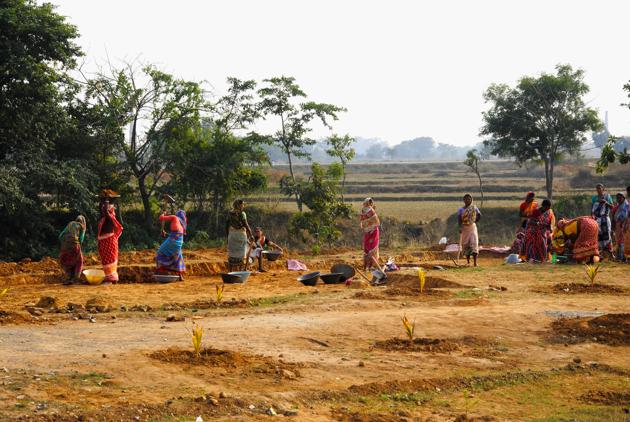Creating an inclusive welfare architecture
Cover all of India’s poor; and merge welfare programmes under one umbrella scheme
The recently announced Atmanirbhar 3.0 package offers important insights into the Centre’s approach to welfare spending in response to the economic shocks caused by Covid-19. The choices point to critical limitations in India’s current welfare architecture and the politics that shape spending choices. With the focus now shifting to the 2021 budget, there is an urgent need to reflect on these choices and articulate a road map for the next year. A robust, inclusive welfare architecture is both a moral imperative as well a critical component for economic recovery.

First, the good news. India’s existing welfare architecture has proved resilient and capable in preventing deep distress in rural India. The Mahatma Gandhi National Rural Employment Guarantee Scheme (MGNREGS) and the Public Distribution System (PDS) proved to be lifelines as central and state governments were able to mobilise the administrative machinery and expand the welfare net, at relative speed. By October, nearly two-thirds of the MGNREGS budget had already been spent while demand for work remains unabated. In response, Atmanirbhar 3.0 has increased allocations by a further ₹10,000 crore; this may not be enough given the scale of demand but continued budgetary expansion highlights the essential role of MGNREGS.
For those with ration cards, the PDS was a vital source of relief. Independent surveys point out that a large number of eligible beneficiaries (the numbers range from 63% to above 90%) received grains allocated through the Atmanirbhar package. That the central government extended the expanded PDS scheme till November 2020 (just in time to reap benefits from the Bihar elections) is a good indicator of its effectiveness. The problem with the PDS was not its failure to deliver but rather the failure to universalise the PDS.
For years, policy debates on India’s welfare architecture have sought to pit MGNREGS and PDS as inefficient schemes against the deceptively elegant promise of cash transfers. That both schemes have proved effective in responding to the large-scale shock of Covid-19 should put this debate to rest. The emphasis now needs to shift to expansion and strengthening delivery.
Urban India, however, has not been well served. India’s welfare architecture is simply not designed to respond to the needs of the urban poor, especially migrant workers. With the exception of the PDS (available only to residents) and a smattering of insurance and pension programmes (accounting for a mere 6% of total central government spending on social protection), social protection for urban India is conspicuously absent.
The urban (largely casual, daily wage) worker has paid a heavy price for this absence. Yet, the horrific images of millions of workers walking home, and surveys repeatedly highlighting the sharp income drop amongst urban workers have failed to elicit an adequate policy response.
Absent a pre-existing scheme, the Centre had few instruments at its disposal to deploy to respond to urban distress, although, with a little imagination, this was not an insurmountable hurdle. The emphasis has thus been limited to portability of ration cards under the one nation, one ration card scheme. Reports indicate that a welcome proposal to launch an urban MGNREGS was discussed but later abandoned in favour of increased expenditure in the urban housing scheme and boosting urban employment through incentives for EPFO-registered firms. Given the realities of India’s informal economy — in recent months, the number of EPFO registered firms has dropped — it is unlikely that the latter will be able to respond to the scale of unemployment and associated urban distress.
The lesson to be drawn from the Covid-19 induced economic distress and the Centre’s response is the urgent need to transform India’s social protection architecture into a dynamic system that ensures universal coverage of all of India’s poor. Several interlocutors have argued for a universal (or quasi-universal) cash transfer as the critical missing link that can bridge this gap between rural and urban social protection. However, this debate misses the dynamic nature of the social protection needs of India’s poor. Fifty per cent of India’s population is vulnerable, ie can slip back into poverty with one income shock. This population needs a dynamic basket of social protection instruments — pensions, life insurance, health insurance and distress-linked cash or employment in times of crisis or sluggish growth. Prioritisation will depend on local labour market conditions.
The only effective strategy is to build a decentralised social protection system that allows states and even districts to design schemes to their specific conditions. Some states have begun experimenting, but urban schemes need fiscal support. This is where politics trumps first principles. The impulse to centralise and seek direct credit for welfare is entrenched in our politics.
There is one way to balance politics and first principles. As recommended by the World Bank, the Centre can, alongside core national schemes like the MGNREGS and PDS, repurpose its 400+ social protection transfer schemes into one umbrella scheme but leave states to design interventions to their needs, political credit and blame can be apportioned across Centre and states. The 2021 budget is an opportunity to implement this much-needed reform. Sensible rationalisation and expenditure repurposing can serve as the foundation of an agile, dynamic and inclusive social protection architecture.



